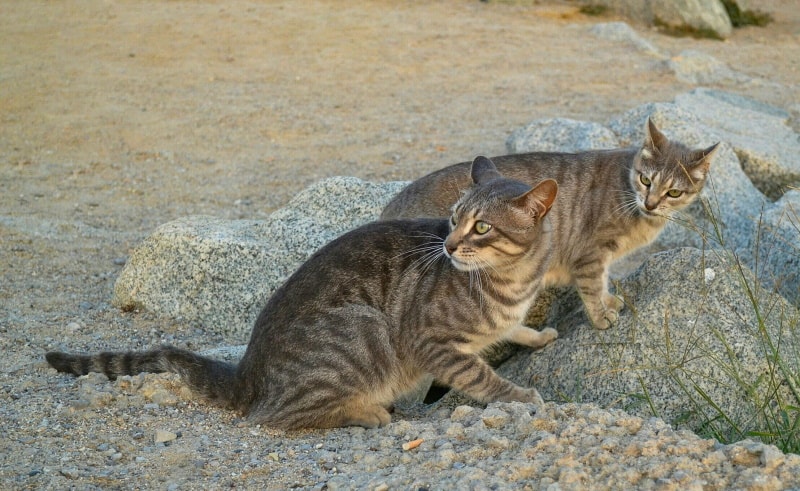Cat Teenage Years: What to Expect from Cat Adolescence
By Ashley Bates
Updated on
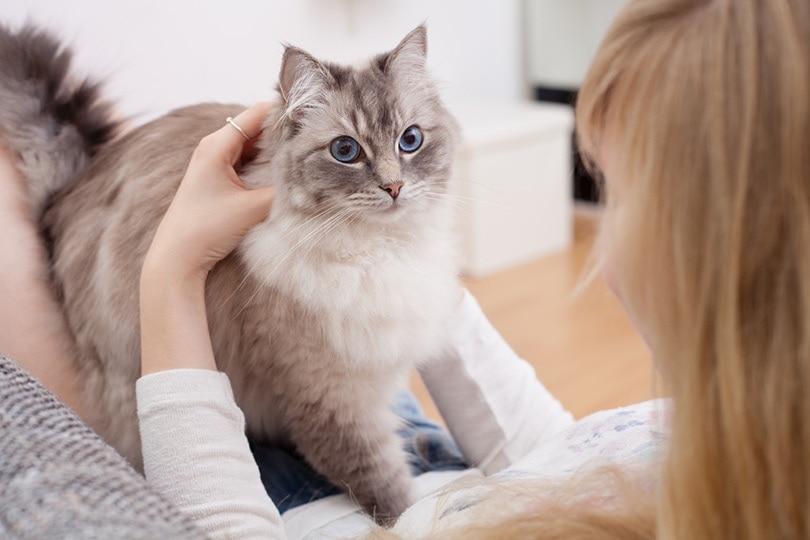
Click to Skip Ahead
Have you found yourself facing off with a cat who loves climbing curtains, scaling the kitchen cupboards, or attacking everything that moves? It can be a lot to handle, especially if you’re a novice cat owner. While playful kittens are all sorts of adorable, when cats enter their “teenage years”, those playful antics can often become destructive tornadoes! Like humans, these stages come with their fair share of difficulties, but unlike with humans, the feline teens will improve in just a few months.
Cats mature at their own pace. Some settle down once they’ve finished growing, while others keep an upbeat, playful spirit long into adulthood. In this article, we will explore what to expect from feline adolescence, and how to creatively deal with the problems that come along with the times.
When Are a Cat’s Teenage Years?
Some people refer to the idea of “cat years”, with one cat year being the equivalent of 7 human years. Essentially, this is just a way of comparing their average lifespan to ours. A more accurate way to draw parallels between the two is to compare life stages.
As a rough guide:
| Human | Cat | ||
| Infancy | 0 – 4 years | 0 – 8 weeks | Kitten |
| Child | 5 – 12 years | 9- 20 weeks | |
| Teenager | 13 – 18 years | 6 – 24 months | Adolescent |
| Young Adult | 19 – 30 years | 2 – 6 years | Prime |
| Middle-Aged | 31-55 years | 7 – 10 years | |
| Geriatric | 55 + years | 11 + years | Mature |
A cat is born a tiny defenseless kitten and turns quickly into a reckless teenager before your very eyes. Your once-cuddly kitty gets out their murder mittens and tries to use you as a scratching post instead of a squishy napping spot.
Cats generally go through four distinct stages—kitten, adolescent, prime, and mature. But when exactly does your kitten transition into the teen phase? It starts at approximately 6 months of age, but changes can begin as early as 4 months, and lasts until they are about 2 years old.
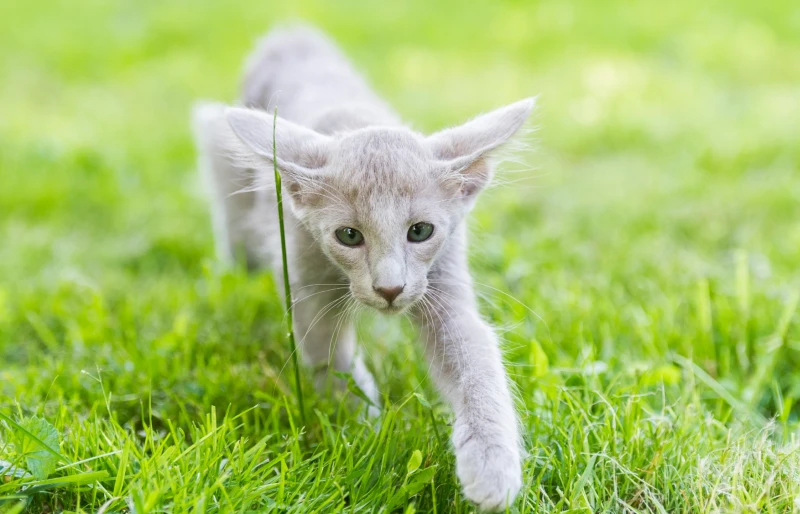
What Marks the Entry into Teen Years?
Certain characteristic bodily and personality changes mark teenage years in cats. These include:
- Sexual maturity
- Predatory urges
- Increased exercise needs
Behaviors of Teenage Cats
The teen years are slightly different for every feline, but some behaviors are pretty standard. If there is something specific about your cat’s behavior that is giving you cause for concern, you are probably not alone. It’s also worth noting that most of the more destructive or negative behaviors experienced during this time will usually settle over time, with a bit of patience and some positive reinforcement of more desirable behaviors.
Some of the more common characteristics of feline adolescence include:
1. Scratching

With your cat’s increase in prey-drive instincts, they will really start showing predatory and territorial behaviors. One of these behaviors includes scratching. The action of scratching surfaces sharpens claws by wearing away the dead sheath, making them more efficient on the hunt.
Clawing enhances muscle tone in the front legs, helping your cat be stealthy and efficient. It also allows them to leave their scent behind as a way of marking their territory.
It is completely normal to notice an increase in your cat’s desire to claw. At this time, offering cat scratching posts is essential so they can learn to appropriately use them.
Cat scratching posts can be made from several different materials. The most common materials for cat scratching posts include sisal rope, sisal fabric, carpet, and cardboard. You can buy one online, or you can make a few at home yourself.
2. Playful Aggression
Your cat is going to want to play, play, play! And part of the problem is that they don’t always realize that those teeth and claws are sharp! Cats at this time can be quite challenging because of their high activity levels. When they frequently want to play, it can cause injury and property destruction. It is important to not engage in rough play with your young cat, as it makes it much harder for them to learn that we are not suitable sparring partners.
3. Practicing Hunting
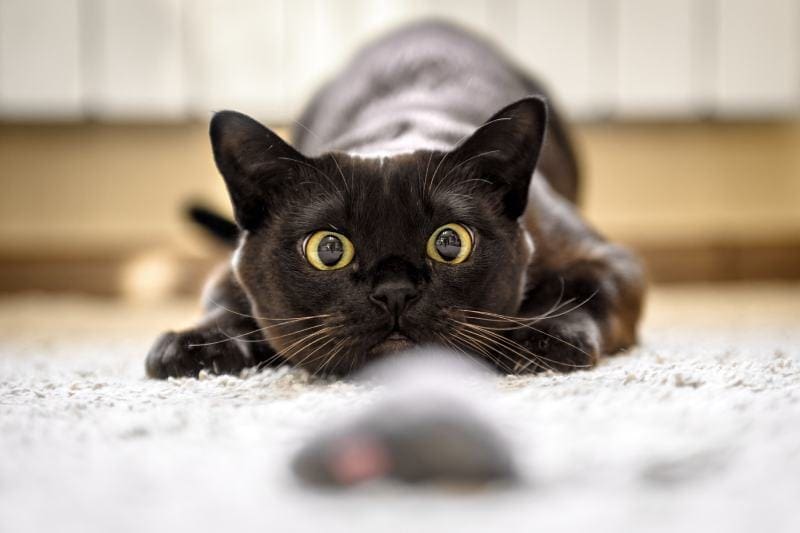
Your cat will start stacking, pouncing, and clawing up everything! In order for them to become sufficient adults, they naturally develop pre-driven instincts. You might see a fuzzball blow across the floor, and your cat comes out of nowhere to attack it. Some cats will also enjoy lying in wait for an unsuspecting pair of ankles to come around a corner.
They’re extremely sharp hunters with impeccable vision and an excellent sense of smell. During this phase, they will fully develop their senses and learn how to harness them for their benefit.
4. Nighttime Prowling
Not actually nocturnal, cats are crepuscular creatures. This means they see best when the lighting is low at dusk and dawn. Because of their inclination towards darker hours, you might notice that they suddenly become super active at very unsociable hours.
5. Hormonal Behavior
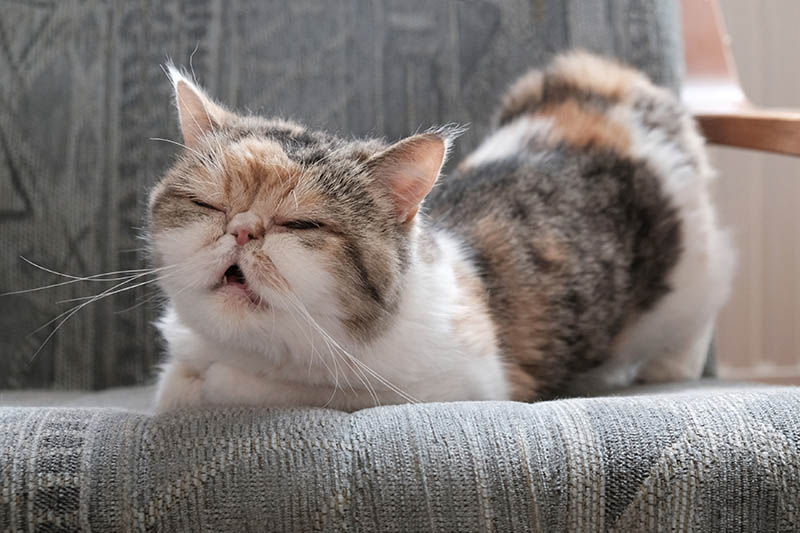
Between the ages of 4 to 6 months, cats go into sexual maturity. During this time, many things will change, particularly sex-based changes. Males tend to exhibit more of an aggression and partner-seeking set of behaviors, including spraying.
Females will go into monthly heat cycles, changing their behavior drastically. They will become ultra-affectionate, very vocal, and demand physical attention. Females also have the capability of spraying just like their male counterparts.
Surviving the Teenage Years Tips
It might seem like your cat is constantly bouncing off the walls, and there doesn’t appear to be any end in sight. However, this, too, shall pass. Soon, they will be calmer, more cuddly, and less destructive. Here are some tips on how to get through this stage.
1. Lots of Toys
Your cat will certainly benefit from having something to do at all times. To keep them busy during this time, it’s important to get a variety of different toys that appeal to them. They can have solo sessions with these toys, or you can get a few for interactive play.
2. Offer Various Forms of Entertainment
In addition to toys, it is beneficial to have other forms of entertainment as well. Examples include cat trees, condos, caves, wall platforms, exercise wheels, and even caged outdoor cat sanctuaries.
3. Two Are Better Than One
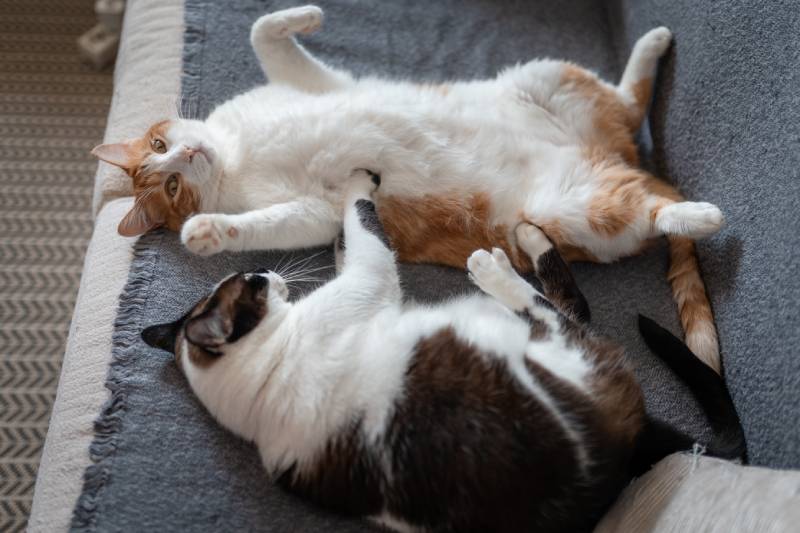
One of the most common complaints about this age is that cats will play, bite, and scratch the arms, hands, ankles and legs of their owners. Part of the problem is that they need somewhere to place that energy, and the other is that they don’t really know how rough is too rough. Although cats are not gregarious by nature, they live very happily with siblings, or when introduced to other cats as kittens. Having another rambunctious teenager to chase, wrestle, and fight with, is a great way for them to burn off energy and learn that claws and teeth are actually pretty painful! With two teenage kitties, you can halve a lot of your adolescent troubles.
4. Correct Poor Behavior
The important thing to remember is that the vast majority of undesired behaviors are natural behaviors. Trying to stop them outright will not work, and will just lead to frustration. Redirecting natural behaviors is much more likely to be successful.
For example:
- Block access to furniture or cover with aluminum foil to deter scratching, PLUS provide scratching posts, cat trees etc, and reward your cat when they use them
- Ignore them after bedtime, PLUS get in a good, vigorous play session before bed
- Ignore them/walk away if their play gets too rough, PLUS use interactive toys to help engage their senses
5. Spay/Neuter on Time
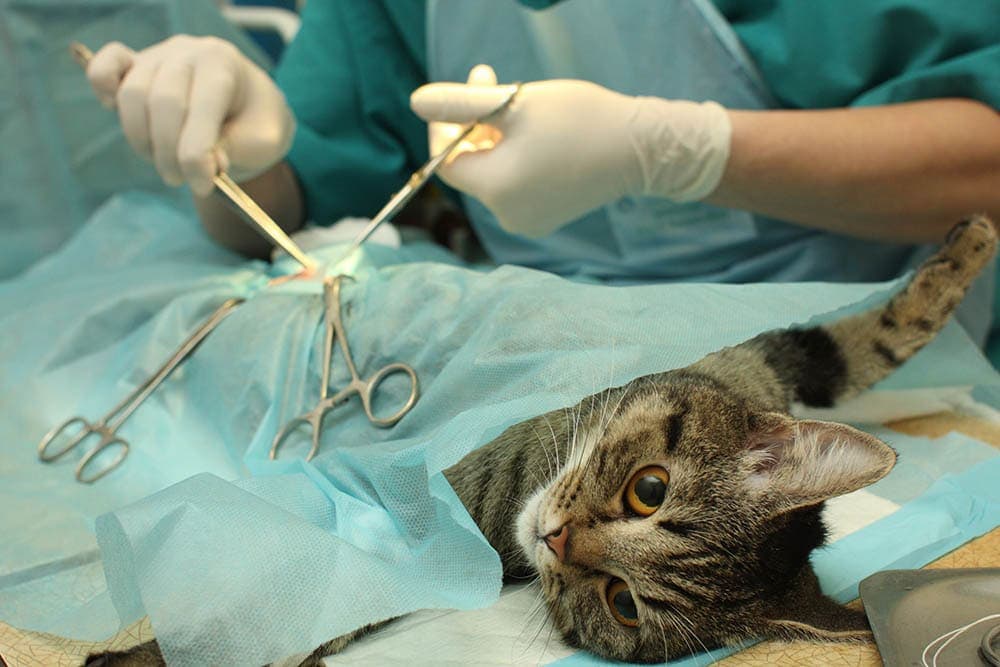
Because cats reach sexual maturity between 4 and 6 months, you must get them spayed or neutered before the hormones hit. Doing so will help to calm your cat down and reduce the risk of unwanted behaviors, straying, spraying, and accidental pregnancies.
Both males and females are capable of spraying. You probably know that cat urine has a potent scent that is incredibly hard to remove from fabrics, carpets, and furniture. If your cat has got into the habit of spraying, getting them fixed often won’t necessarily stop this behavior, though it may lessen the frequency. That’s why it’s important to have them spayed/neutered before those behaviors set in.
Be aware that female cats can become pregnant from as young as 16 weeks, which is particularly important if you have male and female siblings. They can also become pregnant shortly after giving birth, so if you have a mama cat with kittens, keep her inside until you can have her spayed.
Management for Outdoor Cats
Whether you have your cat partially or fully outdoors, you’ll need to take certain precautions. Apart from spaying and neutering, your cat must have the following for safety and security reasons.
Microchip
Microchips offer a terrific layer of protection if your cat wanders off. If someone saves your cat from some circumstance, they can take them to any vet, shelter, or rescue center to scan the chip. It is vital to update your contact details so the company can get a hold of you.
Current Vaccinations
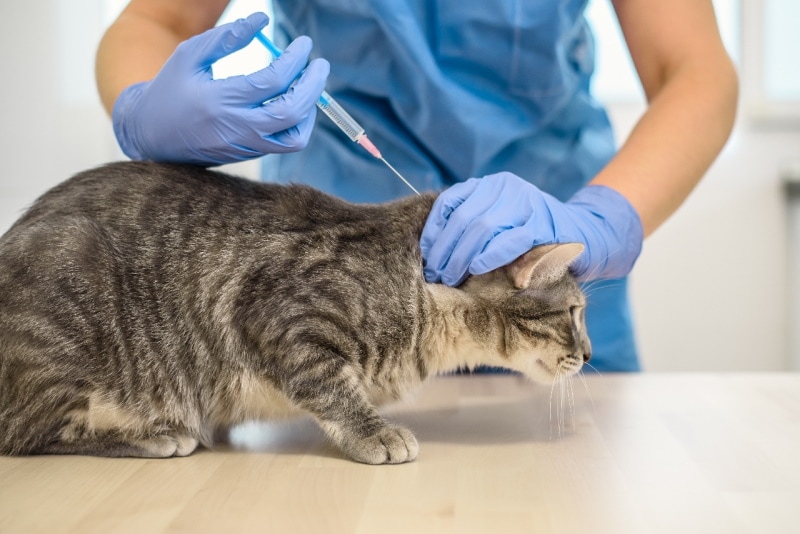
If your cat plans on roaming the great unknown, it’s even more vital to ensure they are up to date on shots. These vaccines will help your cat stay healthy and prevent unwanted diseases.
ID Tags
ID tags, unlike microchipping, are a direct means of contact. The person who picks your cat up immediately has a line of communication.
Conclusion
The feline teens can be frustrating, but they don’t need to be. Remember that most of the things they are doing are natural behaviors, and they’re just trying to figure things out. It is important not to get angry, but make sure that you are providing them with a range of different outlets for these adolescent behaviors.
Keeping two kittens together might sound like you’re doubling your trouble, but this can really help. They can do the chasing, fighting, hiding and hunting together, leaving the snuggles for you!
Remember, spaying and neutering will eliminate a lot of unwanted behaviors from occurring—it’s a simple fix, no pun intended.
Featured Image Credit: rock-the-stock, Shutterstock




